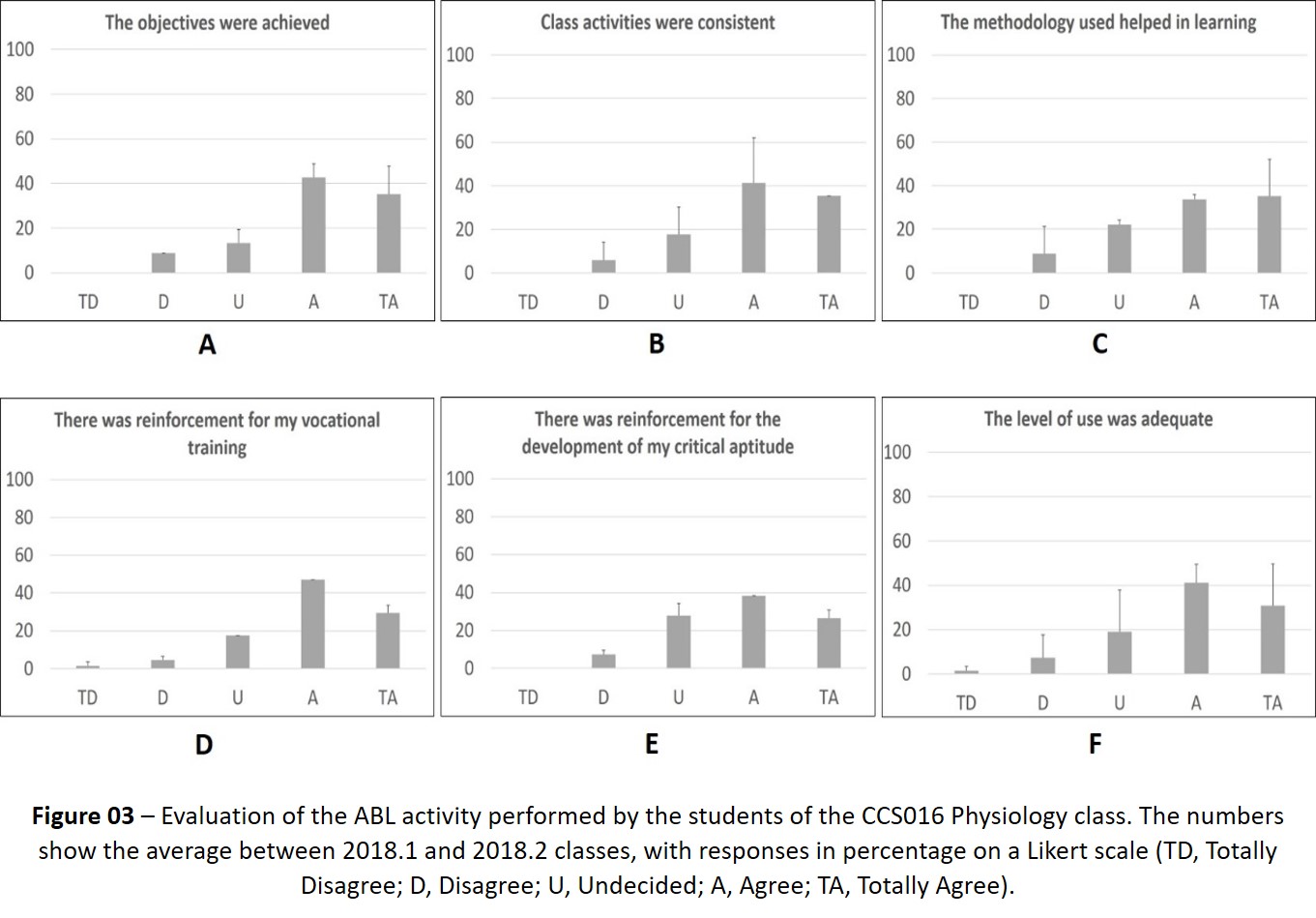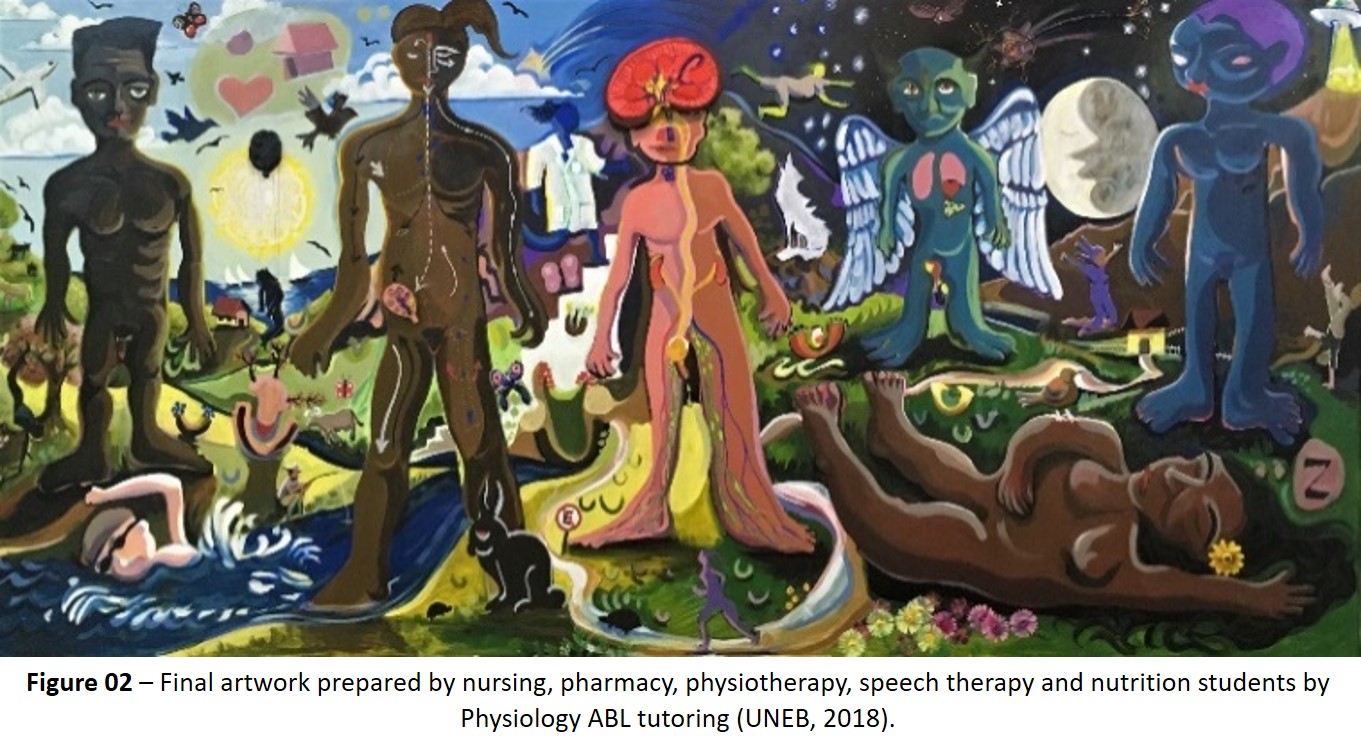In Problem-based learning, students work together to learn subject concepts triggered by an open-ended situation, aiming to develop knowledge in a critical, communicative way. Such student-centered, active teaching and learning methodologies have been used in different fields where multidisciplinary work is characteristic. We describe a teaching and learning activity derived from Problem-based Learning established on collective artistic creation related to human physiology, in the molecular, cellular, and systemic levels, called Arts-based Learning. Undergraduate students of a Physiology course from a Brazilian Public University were stimulated to create acrylic painting panels, aiming to help learning in group with long-term memorization. Art works were produced throughout the academic semester and the participants evaluated the activity by an applied survey. Data shows favorable results pointing to general approval. On average, approximately 70% of students agreed that the method helps in learning, reinforces vocational training, critical aptitude, creativity, and increases the level of academic achievement. Key words: Teaching, Active methodology, Learning, Arts-based learning, Physiology, Biology, Painting.
Future Physiology 2020 (Virutal) (2020) Proc Physiol Soc 46, PC0035
Poster Communications: Arts-Based Learning as a complementary educational tool in physiology class.
Edson Rodrigues1, Suzana da Cunha Lima2
1 UNEB, SALVADOR, Brazil 2 UFBA, SALVADOR, Brazil
View other abstracts by:
Where applicable, experiments conform with Society ethical requirements.



